The vastness of Russia has a large number of forests, in which lovers of "quiet hunting" can gather a rich harvest. Poisonous mushrooms appear in forests in parallel with edible ones. The effect of toxins on the body is determined not only by the toxicity, but also by the age of the victim: children under 8 years old are contraindicated to give even edible mushrooms.
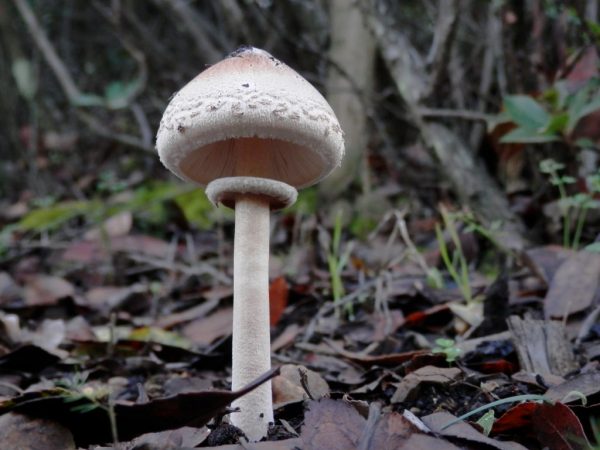
Description of poisonous mushrooms
Photos and names of mushrooms
Varieties of dangerous mushrooms
The list of poisonous mushrooms common in Russia includes: pale toadstool, fly agaric, torn mushroom, abortiporus or false tinder fungus, false heap, satanic mushroom, touch-me-not or marsh gallerina, false russula, false rows, bilious mushroom.
Poisonous mushrooms cause severe poisoning and even death.
It is believed that inedible mushrooms are not wormy, and wild animals bypass them. Vivid examples of the opposite are the fly agaric and the satanic mushroom, which are harmful to health, but rarely cause death. Large wild animals use the fly agaric as an antidote in case of poisoning and during illness, and the worms happily eat the dense pulp.
Distinguish between poisonous and conditionally dangerous mushrooms. The second subgroup includes representatives who, during prolonged cooking, lose toxic substances and are completely suitable for consumption. Hazardous substances gradually accumulate as the fungus matures. In old age, any edible mushroom is dangerous. Non-poisonous mushrooms cause mild bowel upset.
Death cap
A pale grebe provokes serious poisoning. A young poisonous mushroom looks like a champignon. Eating it in food leads to damage and cessation of the liver. The biggest danger is that the first signs of poisoning begin to appear after 24 to 48 hours. During this time, toxins are actively distributed to all organs and disable them.
Grebe prefers mixed forests, appears in May and bears fruit until September. The cap of a young mushroom is egg-shaped. It has a white color, and the leg is practically invisible, which excludes the possibility of determining its toxicity. The only way to distinguish a toadstool from a champignon is to pluck the mushroom along with the part of the mycelium adjacent to the stem. This representative of the Kingdom of Mushrooms has a special sac surrounding the base of the leg - the vulva (volva), which looks like an egg.
Distinctive features of edible and poisonous mushrooms appear as they mature. There are skirt rings on the leg at the top and bottom of the old specimen. The cap is white, sometimes slightly green (olive). The diametral range of the head is 7-15 cm.The fruit body is white, does not change color when reacted with air on the cut, exudes a barely audible pleasant aroma of mushrooms.
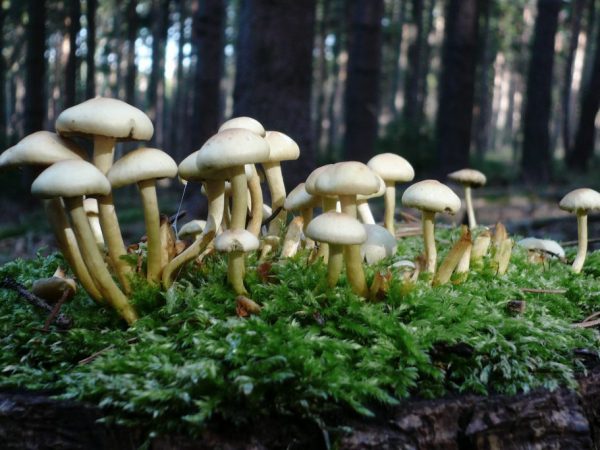
Signs of toadstool poisoning begin to appear after 24-48 hours
Fly agarics
Amanita has received the title of the most dangerous mushroom for humans. It includes not only poisonous varieties, but also edible gourmet species: Caesarean mushroom and gray-pink fly agaric.
The traditional poisonous representative of this genus is the red fly agaric or, as they call it in some places, the fire agaric. The white hollow stem of the mushroom has a ring-skirt at the top. The hat is 5-12 cm in diameter, painted red and covered with white warty flakes, which are washed off by precipitation and easily fly off in a gust of wind.
In addition to the red fly agaric, there are other poisonous mushrooms of this species:
- Panther: the cap is brown, covered with frequent white growths. The stem is creamy, hollow with 2 rings at the bottom. The pulp is watery, smells like vegetables. Grows in coniferous forests in spring and autumn.
- Smelly: the main difference is the acrid smell of bleach. The hat is shiny, domed, white. The leg is 10-12 cm high, almost always curved. The base of the stem is tuberous.
- Citric: prefers sandy soils. The yellow cap is covered with a smooth skin, with sparse flakes. The hymenophore is lamellar. The hat is held on a low, 3-5 cm in height, squat leg, framed at the bottom with a ring.
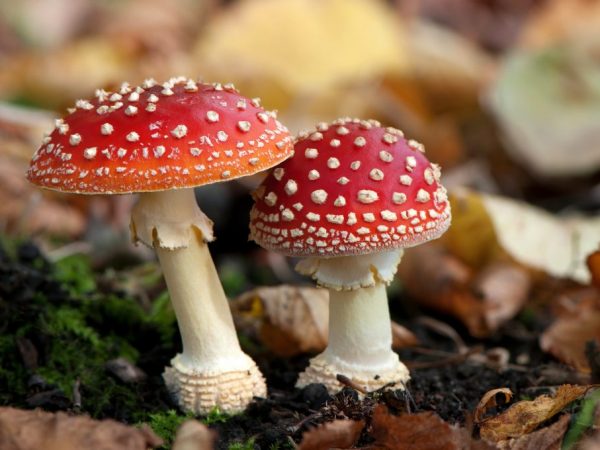
The traditional representative of the poisonous fly agaric is fireball
Torn mushroom (fiber)
Small, poisonous torn mushrooms got their name from their characteristic appearance. On a low stem (1-2 cm) sits a green, olive-tinted cap, 5-8 cm in diameter, covered with longitudinal and transverse cracks, with ragged edges. The hymenophore is black. The most dangerous mushroom found in the vastness of the Russian Federation.
The mushroom body contains muscarine. In terms of the concentration of the poisonous substance, this representative surpasses even the red fly agaric. Fungus poisoning is noticeable within 30 minutes after consumption.
Irina Selyutina (Biologist):
Studies have shown that the vegetable alkaloid atropine can neutralize the effects of muscarine. Its amount required for these purposes is only 0.001-0.1 mg. However, experiments have shown that muscarine, in turn, can "reverse" the effect of atropine. Only in this case, a lot of muscarine will be required - up to 7 g. Therefore, there is an opinion that atropine and muscarine are mutual antagonists.
The first symptoms: dizziness, vomiting, severe stomach cramps.
False tinder
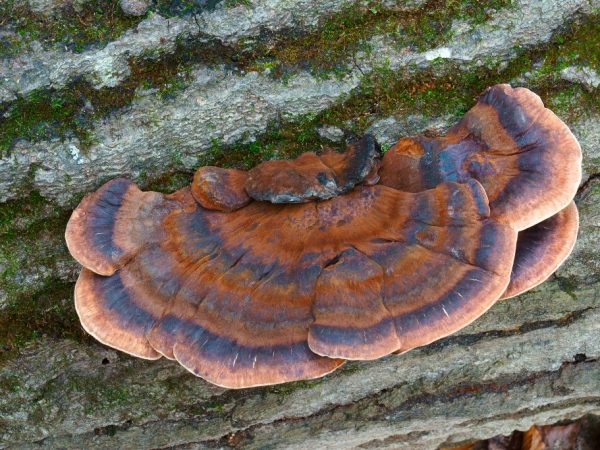
False tinder fungus is rare
Among the inedible and poisonous mushrooms is the false tinder fungus, which is called abortiporus. A beautiful representative of the mushroom kingdom grows on trees. Outwardly it looks like a flower. The carved hat is attached to the tree trunk with a barely noticeable leg, 1 cm high.
The flesh of these forest representatives is white with a creamy tint. The variety is rare, because few people are aware that it is deadly. You can recognize it by its authentic color and fan-shaped shape. The real tinder fungus is almost black, has a treelike mycelium structure.
False heap
Sulfur-yellow representatives of the genus are classified as conditionally poisonous. Outwardly, they almost do not differ from edible ones. They grow in numerous groups on woody debris.
The color of the cap of the poisonous mushroom is sulfur-yellow. The lamellar hymenophore on a thin long stem, in an old mushroom, is colored black or black-olive. The pulp is light gray, bitter in taste, has an unpleasant pungent odor. A distinctive feature of the edible honey mushroom (autumn) is the "skirt" on the leg.
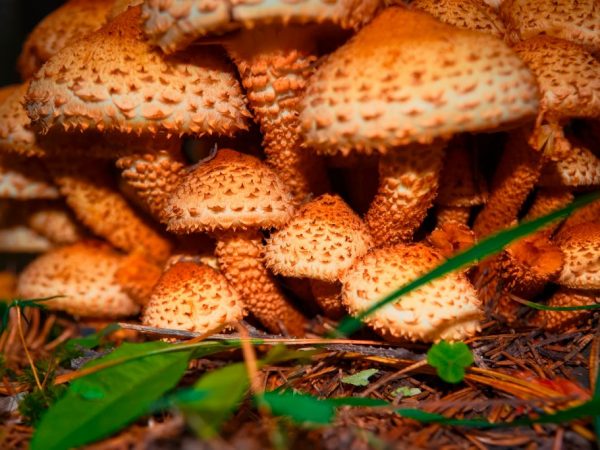
False mushrooms grow on wood debris
Satanic mushroom
Satanic mushroom looks like white or boletus. The dense massive cap sits on a strong ovoid stem. The hymenophore is spongy. The flesh of a young specimen smells good, without bitterness.Old mushrooms smell like rotten vegetables.
You can check a specimen for toxicity by cutting it. Inside, the boletus double is colored red. In reaction with air, the pulp turns blue. The toxins of these representatives of the Bolet genus will not kill a person, but a pair of mushrooms is enough to cause significant harm to the gastric tract and liver.
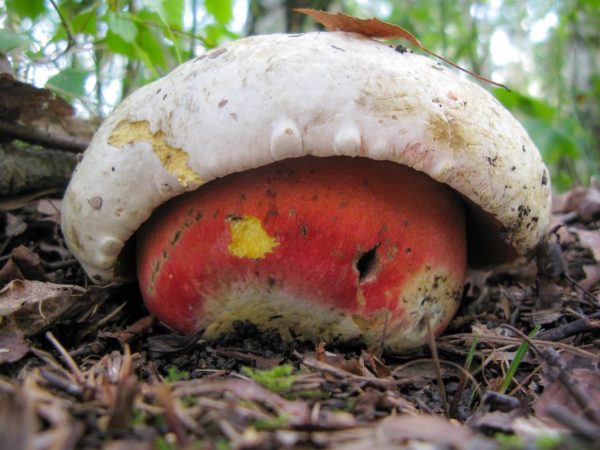
Satanic mushroom damages the human gastrointestinal tract and liver
Touchy
A truly poisonous mushroom, the marsh gallerina, or touch-me-not, grows in small groups. A dark yellow hat sits on a fragile translucent leg. In young specimens, they resemble bells. In a mature mushroom, the cap becomes flat with a well-defined bulge in the central part.
The pulp of the mushroom is watery. Causes serious poisoning when eaten. The first signs that a person has eaten a poisoned mushroom are vomiting and stomach cramps. After 3 hours, other symptoms join.
False root
Poisonous mushroom - blood-red russula. The hat is 1-5cm, bright red, covered with a shiny slimy skin. The shape of the cap is hemispherical in the young specimen, depressed-prostrate in the old specimen.
Russula belongs to lamellar mushrooms. The hymenophore consists of frequent, narrow plates. The clavate stem is smooth, not exceeding 8 cm in height. The pulp is white, dense in structure, odorless and tasteless. Russula prefers acidic soils, comes across in mixed and coniferous forests. These basidiomycetes can grow in three fruiting bodies together.
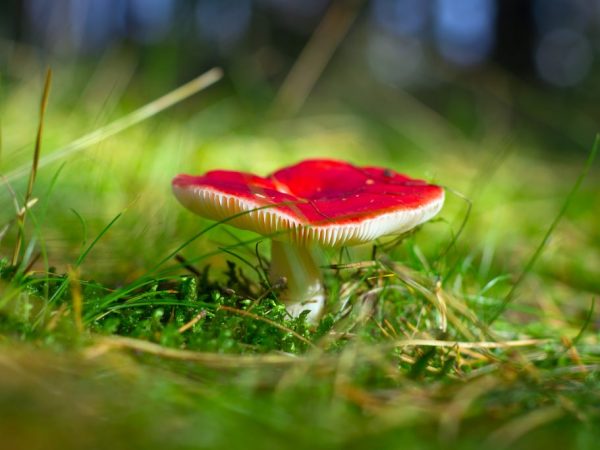
Poisonous russula found in mixed and coniferous forests
Lzheryadovki
In another way, autumn rows are called talkers. Mushroom pickers claim that the content of toxins in the ryadovki is higher than in the fly agaric. Their use leads to death.
This poisonous mushroom includes the following varieties:
- Discolored: ranked as "meadow". The hat is slightly convex, white, almost transparent in color, which is why it acquired its name. It evens out with aging. The pulp is fibrous, darkens in reaction with air. Prefers steppe zones to shaded forests.
- Tiger: found on calcareous soils. Her cap is wrapped around the leg and is painted gray. The hymenophore consists of powerful plates. The leg is slightly lighter than the cap. The dense pulp smells like flour.
- Pointed: grows in coniferous forests. A characteristic feature is the pointed top of the gray cap. The long white leg is colored yellow at the bottom. The pulp is white, odorless, bitter in taste.
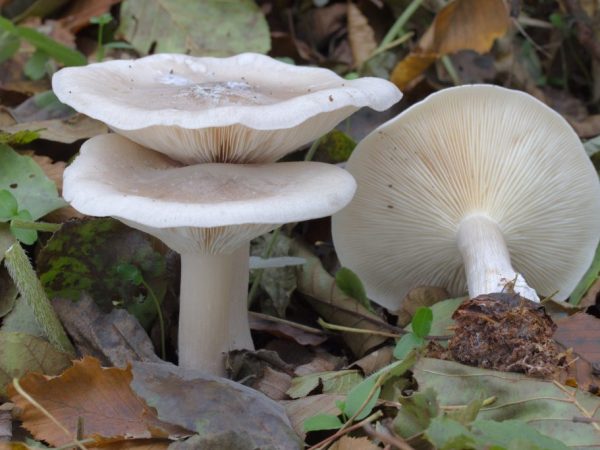
The content of toxins in the govorushka mushroom is higher than in the fly agaric.
Gall mushroom
The conditionally poisonous bile mushroom is called bitter taste. Even worms do not risk it. Bile is one of the most dangerous fungi for human health. Its use will not cause death, but it will cause colossal damage to the liver and other internal organs.
At the first sign of poisoning, medical advice is required. After the danger has passed, it is necessary to revise the diet and observe a gentle regimen for the liver. The recovery period will take some time, depending on the age of the victim.
Irina Selyutina (Biologist):
Bile, or false porcini mushroom, or bitter mushroom, in appearance, has similarities with boletus. However, unlike him, it is inedible due to its bitter taste. Cooking (even long-term) does not relieve the mushroom from bitterness, on the contrary, it even intensifies.
A careful study of the "appearance" right in the forest will allow you to distinguish bitterness from real edible mushrooms:
- The spongy hymenophore is pink or dirty pink.
- The pulp is fibrous.
- The presence of a characteristic brown mesh on the leg.
- The pulp on the cut will immediately begin to change its color (turns pink or red).
Some recommend licking the suspect's flesh, but this is best left as a last resort, becauseit contains toxins that are easily absorbed into the bloodstream (even with a simple touch of the pulp) and destroy the liver.
A brown-orange cap, 10 cm in diameter, is tightly attached to a creamy-red stem. This is another boletus twin. You can distinguish them by cutting the fruit body. On the cut, bitterness becomes pink, grows near birches, oaks, pines.
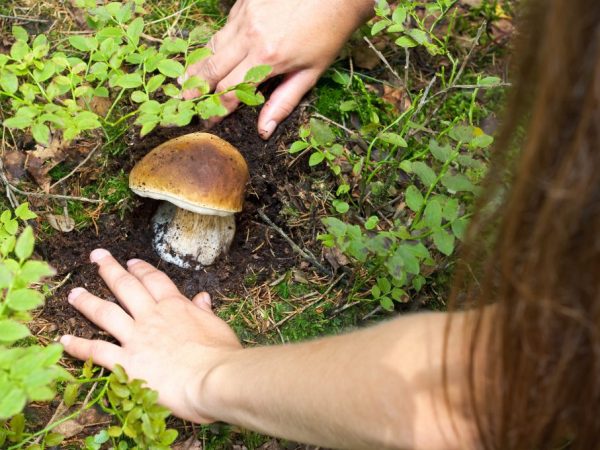
The gall fungus will cause colossal damage to the human liver
Useful properties of poisonous basiomycetes
Interesting Facts:
- most of the listed representatives are used as raw materials for the manufacture of medicines;
- Amanita muscaria was used by the ancient Vikings before going into battle to reduce sensitivity to pain;
- inedibles are eaten after long-term special processing;
- it is impossible to destroy the poisonous representatives of the mushroom kingdom, because they are part of the ecosystem and play an important role in cleaning the environment;
- the most poisonous mushroom in the world - pale toadstool;
- spring representatives are less toxic than those growing in the summer season (information concerns conditionally poisonous specimens);
- the benefit of poisonous basiomycetes is the ability to use an extract from them in agriculture, to create fungicides that prevent the spread of pests and fungal diseases.
Each mushroom picker should have a reminder: "Don't take mushrooms that you don't know." The collection site should be chosen carefully: Basidiomycetes collected near the highway are especially toxic. The mushroom picking season begins in May-June and lasts until the first frost (it depends on the region of residence of the mushroom picker). Many poisonous varieties are easily recognized by cutting the fruit body.
Mushroom poisoning
Typically, toxins are quickly absorbed into the skin and can cause irritation. Fans of "quiet hunting" should always have with them a table containing a description of all Basidiomycetes. If you have symptoms of mushroom poisoning, call an ambulance and get first aid.
First aid at home:
- induce vomiting;
- give the patient a large amount of water with absorbents: activated charcoal or Enterosgel, the dosage is calculated based on body weight.
Conclusion
The variety of mushrooms also includes poisonous species that are dangerous to humans. The main mistake leading to poisoning in beginners is the determination of toxicity by smell.
To avoid mistakes, you need to carefully read the description in the mushroom picker table and do not take basidiomycetes that you do not know - it is better to use healthy mushrooms and not run into unpleasant consequences.
















